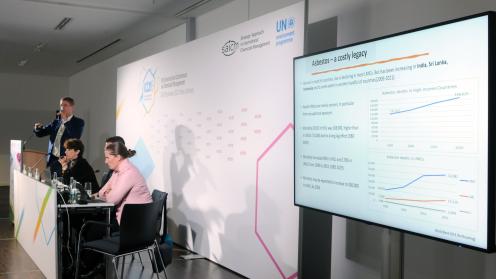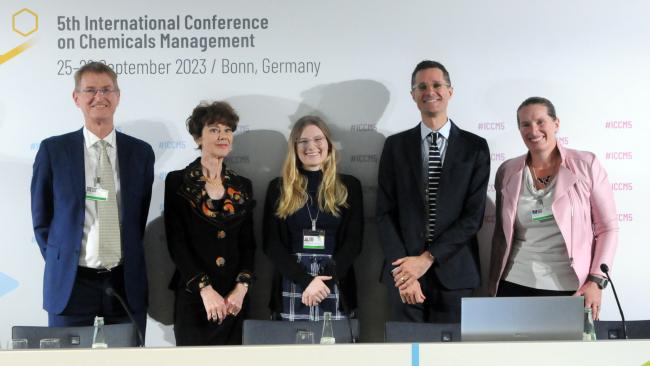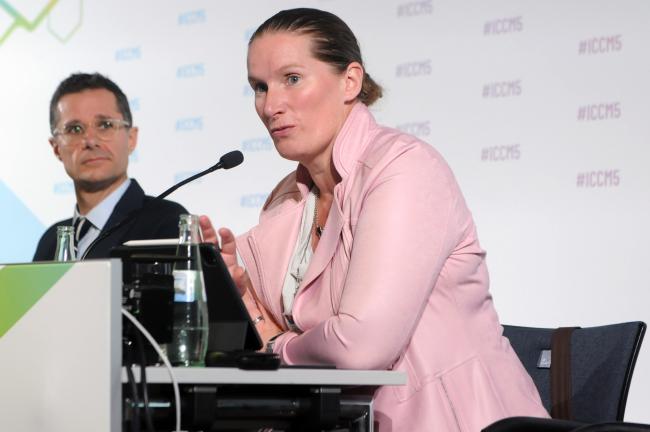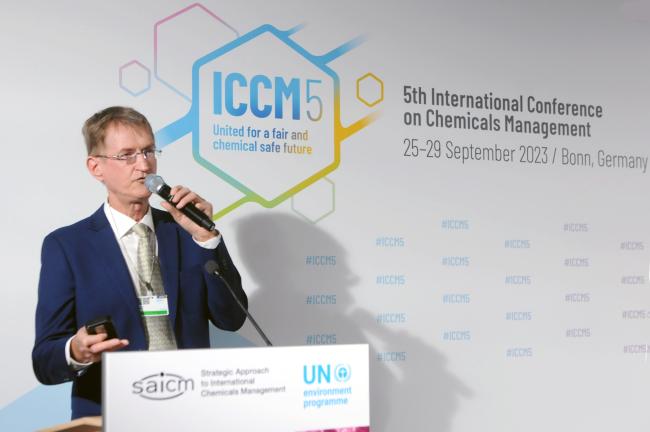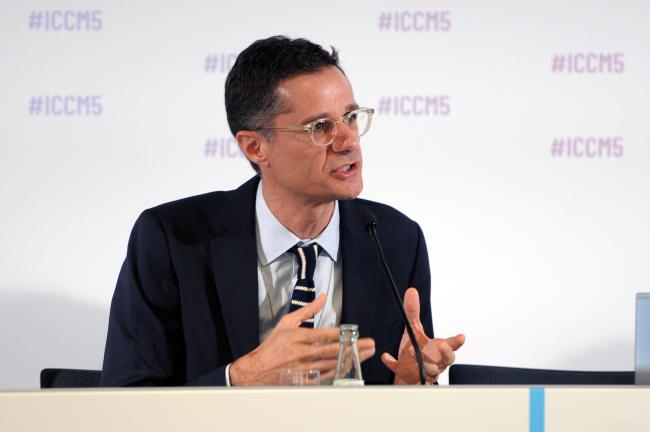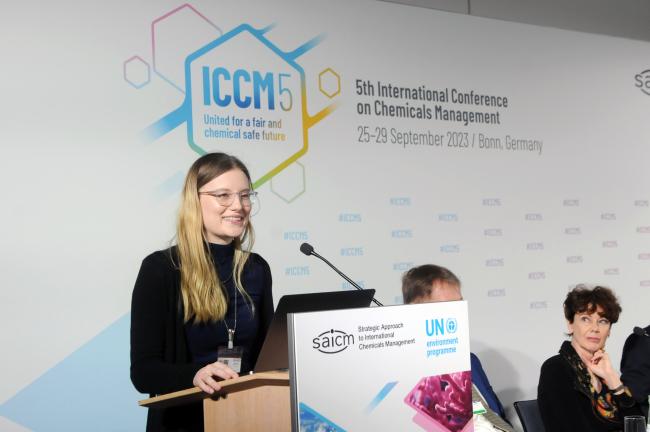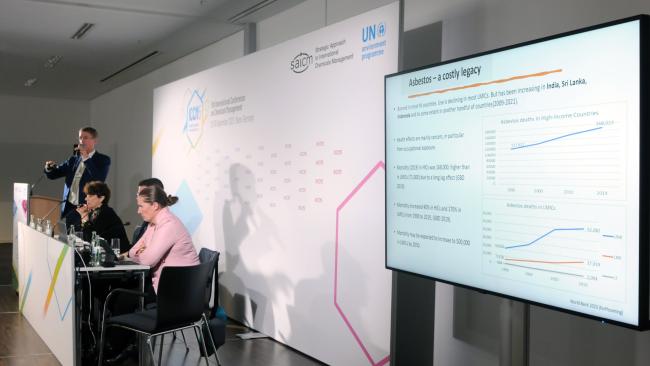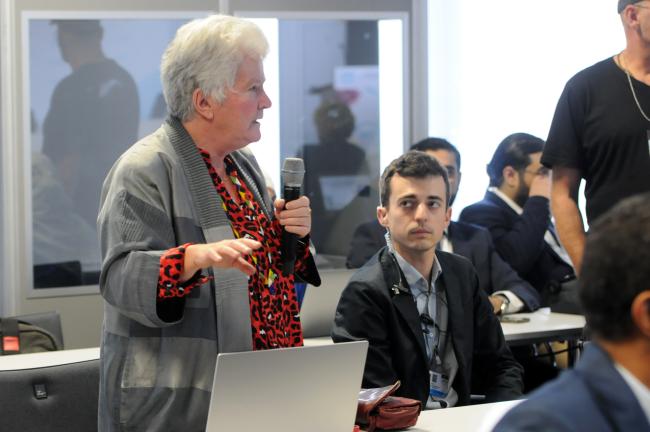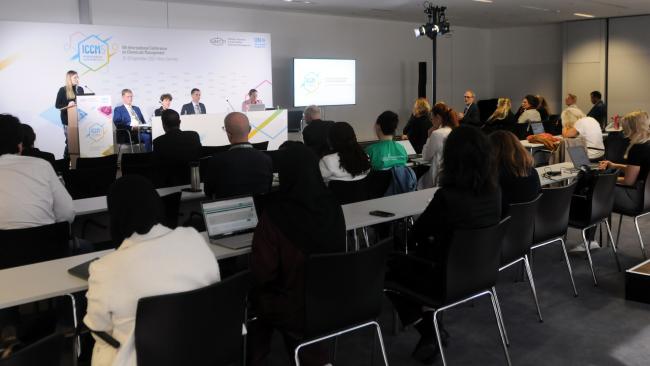About
Panelists focused on recent research on lead, cadmium, asbestos, and nitrogen dioxide (NO2)—just five out of the thousands of chemicals with tremendous health, economic, and environmental impacts.
This event focused on recent research on lead, cadmium, asbestos, and nitrogen dioxide (NO2), with Valery Hickey, Global Director, World Bank, moderating.
Christianne Rohleder, State Secretary, Federal Ministry for the Environment, Nature Conservation, Nuclear Safety and Consumer Protection (BMUV), said Germany supported this research, noting the global cost of lead pollution has been calculated to be reducing global GDP by 7.6% annually, which may be significantly underestimated. She called for more studies to further our collective understanding of the cost of chemical pollution.
Moderator Hickey stressed that the first priority is to agree that the scale of the problem is devastating. She called for protecting people and ensuring a prosperous future on a healthy planet.
Bjorn Larsen, World Bank, presented findings from the World Bank’s ongoing research on the health and economic impacts of unsustainable chemicals management and possible solutions for previously unaccounted-for global annual mortality from lead, cadmium, and NO2. For blood lead concentrations, he said estimates are 8-10 times higher than ten years ago because of a greater understanding of the effects of even low blood lead levels. He added that direct and indirect costs total USD 10.3 trillion, with 90% of exposure in low- and middle-income countries (LMICs), where blood lead levels are three times higher than in high-income countries, affecting children’s cognitive ability and lifetime productivity.
On the other chemicals, he said:
- the study estimated that 2.3 million people died globally from cadmium exposure in 2019;
- 1.8 million died from exposure to NO2 globally in 2019, at a welfare cost of USD 2.7 trillion, with 94% of these in LMICs, and exposure largely due to cooking fuels, leading to the question of how clean liquefied natural gas (LNG) really is; and
- consumption of asbestos is increasing in several countries, including India, Sri Lanka, and Indonesia, with increasing mortality.
He noted that over 20% of all deaths in the world are estimated to be from five environmental risk factors, causing 11.35 million deaths in LMICs in 2019. He also cited other chemicals of major concern, including arsenic, mercury, and endocrine-disrupting chemicals. He concluded by noting that:
- the new estimates are indeed much higher than previously thought;
- chemicals disproportionately affect vulnerable groups, including women, children, and laborers;
- estimates are tentative and may potentially be substantially revised; and
- the first priority is to establish a firm evidence base on the problem and its causes, and then set an effective policy and regulatory framework, and build capacity.
Moderator Hickey noted these figures are from just five out of thousands of chemicals.
Jo Tyndall, Organisation for Economic Co-operation and Development (OECD), said the OECD’s work helps many countries make the economic case for regulating these chemicals. However, given they are only a tiny fraction of those needing regulation, she called for all countries to emplace systematic chemicals frameworks and legislation. She said OECD expanded into cost-benefit assessments to incentivize governmental action.
Andrew McCartor, Pure Earth, detailed issues surrounding lead despite 50 years of efforts to combat it. He noted that one in three children globally have blood lead concentrations exceeding the World Health Organization’s (WHO) trigger for review, but in LMICs it is one in two. He cited lead as responsible for 20% of the educational gap between low-income countries and high-income countries but said the international community spends USD 10 million annually to address lead compared to billions spent on air quality and AIDS. He cited as reasons: invisibility of lead exposure and difficulty of diagnosis; lack of data, with very few studies done in LMICs; odd budget prioritizations; and lack of decision-maker awareness a “lead issue” still exists. He called for helping governments generate primary national-level data.
An audience member said the Sustainable Development Goals’ (SDGs) only indicator for chemical pollution is “accidental deaths from pesticide poisoning,” which are only 100,000 annually, and that replacing this with data on lead would be a wake-up call for world leaders.
Shannon Lisa, Global Focal Point, Chemicals and Waste Youth Platform, Major Group for Children and Youth, spoke on the human face of the people affected, noting her own experience investigating the anomalous cancer cases among young girls in her town. She mentioned the discovery that an electric company formerly based there had had a solvent leak into water sources and homes, something the federal government had not discovered in 20 years of investigations. She explained that youth are ready to carry forward the paradigm of a chemicals governance system that puts rights first, emphasizing that youth are not passive beneficiaries of policies but leaders on science and policy in their communities. She said a Children and Youth Declaration was being presented to the High-Level Segment of ICCM5 and called for putting the policies being generated at ICCM5 into action.
In ensuing discussions, speakers noted:
- lack of a universal methodology andrindicators for measuring the effects of chemicals;
- excess mortality figures, with 90% of the 10 million deaths from the three chemicals in LMICs being the product of poverty, which cannot be ended in a world “awash with chemicals”;
- only 1.5% of the money going to world health is for noncommunicable diseases for which environmental factors contribute substantially;
- intervening on lead is affordable and a good return on investment; and
- part of the solution is to show the human face of the chemicals problem.
Organizer: World Bank
Contact: Valerie Hickey I vhickey@worldbank.org
For more information: www.worldbank.org/en/topic/environment/overview
Text written and edited by Asterios Tsioumanis, Ph.D., Deborah Davenport, Ph.D., and Leila Mead.
All ENB photos are free to use with attribution. For this side event please use: Photo by IISD/ENB | Diego Noguera.
To receive free coverage of global environmental events delivered to your inbox, subscribe to the ENB Update newsletter.
